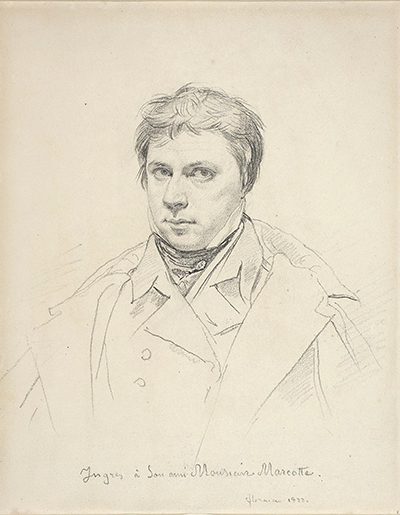Jean-Auguste-Dominique Ingres impact on the medium of drawing cannot be overestimated. His portraits have been described as miraculous by some and have been used for centuries as a teaching tool for young artists looking to learn the principals of this highly technical art form.
Jean-Auguste-Dominique Ingres's Life as a Draughtsman
A young Jean-Auguste-Dominique was immediately drawn into the art scene via his father, an artist himself. Ingres Sr made use of a wide variety of mediums within his own career but also understood how the knowledge of a draughtsman could be carried across into all manner of other art forms, be it painting, sculpture, home decor and even architecture. He set about helping his son to learn these techniques and also quickly spotted that his offspring boasted supreme natural talents in this area. It was to prove a winning combination and some art historians consider drawing to have been the artist's most successful medium.
It was the drawings of Raphael which then helped developed the young artist ever onwards, once he had finished making copies of his father's work. The great Renaissance man left a huge impact on Ingres, later featuring in several of the artist's works, such as Raphael and La Fornarina. It was his time at the Royal Academy of Painting and Sculpture in Toulouse where Ingres first came into contact with this Renaissance legend. There was also a plethora of other influences taught here which opened his eyes to the possibilities of art, which had previously been restricted by just what he had seen his father produce.
Ingres would develop his skills late in his teenage years during a spell in the studio of Jacques-Louis David. He impressed amongst a collection of several hundred young artists and soon after this he would earn the prize of the Prix de Rome, a highly respected French artistic award which has in the past been won by a number of other notable artists including William-Adolphe Bouguereau. Édouard Manet, Edgar Degas, Ernest Chausson and Maurice Ravel are some of the great names to have entered but failed to become victorious. His earlier tutor, David, considered suicide after several failed attempts to win the award and so he clearly would have been impressed with his young prodigy. The award brought a scholarship of several years training and education in the Italian capital which would prove just as valuable as the increased exposure that came about from the award.
When Ingres was finally able to make use of the award Italy was actually under the control of his native France and he would choose to spend nearly the next two decades living there. He travelled around the great centres of the Renaissance, sketching one masterpiece after another in the great collections of Rome, Naples and Florence. His beloved Raphael would dominate his interest, but there was still so much else to see and learn from. His developed skills as a draughtsman helped him to supplement his scholarship payments in order to remain in the country for such as extended period. He produced drawings in graphite for a variety of donors and used it as an opportunity to practice when he had learnt. These drawings have been commended for their accurate depictions of the models' characters and poses.
Ingres returned to live in France but was upset by criticism of his classical style and so decided to return to Italy a decade later. He was appointed director of the French Academy in Rome and immediately set about giving his students a solid base in technical drawing in order to continue Renaissance traditions and also provide a good starting point from which their careers could develop. It was to prove a successful appointment and his directorship helped the school to revive its fortunes. He would then return to France and live there until his death at the age of 87.
Summary of Jean-Auguste-Dominique Ingres's Drawing Methods and Techniques
Drawing is a pastime that many artists have developed something of an obsession with. Ingres was no different to that, and he encouraged his students to do similar. The ease at which one can create drawings in almost any setting allows artists a constant opportunity to express their creative juices, where as something like painting or sculpture holds a clear overhead with regards to setting up and planning ahead. One can remember the drawings of Turner and Monet, one inspiring the other, who always seemed to have a small sketchbook on their person in order to capture something that caught their eye, whenever travelling around. Countless other artists, best known for their paintings, have also held a similar devotion to this challenging but rewarding art form.




